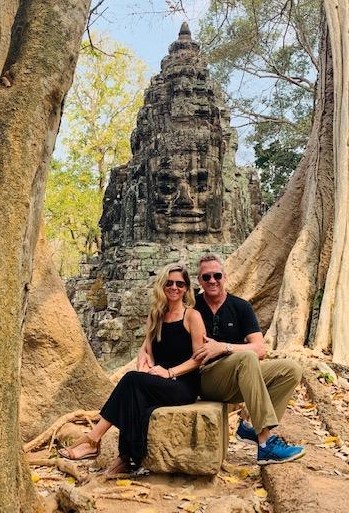
By Wendy Wood-Prince

The jungle is slowly taking over the remains of the Kmer Kingdom.
Located in the southern portion of Indochina, the Cambodian peninsula sits on the Gulf of Thailand. This tropical nation houses a major portion of the Mekong River Delta and includes the famous ruins of Angkor Wat, which the Kmer rulers built during their reign beginning in the early 800s.
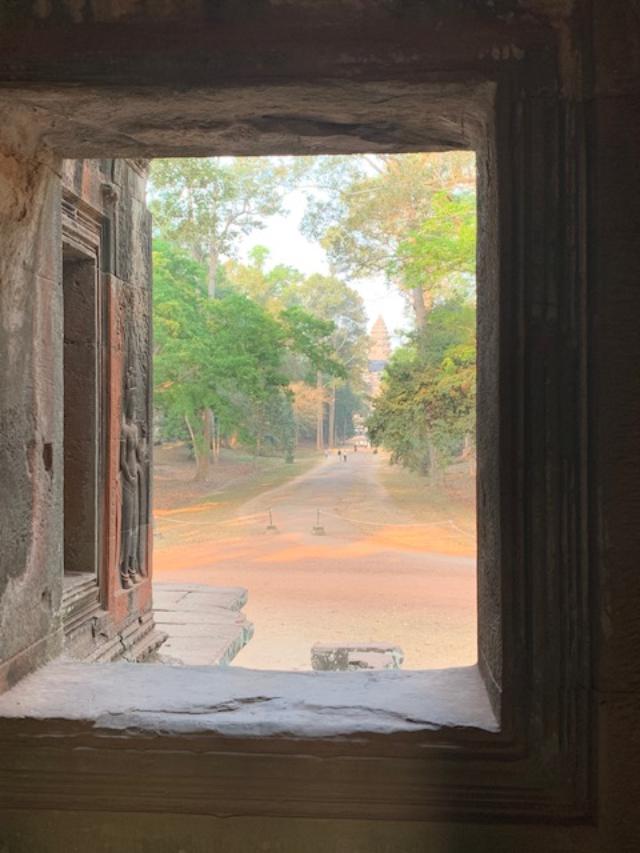
Dreamlike ancient landscapes are around every bend.
For 600 years the Kmer royals had a tenuous hold on the region. The peninsula was located in a critical convergence of maritime trade routes creating vast wealth for the region up until about 1400. Thousands of monuments and temples were built including Angkor Wat, which is a designated World Heritage Site today. After 1400, the Kmer ru
led kingdom started to fizzle out and was pretty much up for grabs until the mid-1800s when it became a protectorate of France. Fast forward to today and this rich history accounts for the diversity in architecture and culture that is so fascinating to experience and is one reason why tourism is leading the economic growth in The Kingdom of Cambodia.
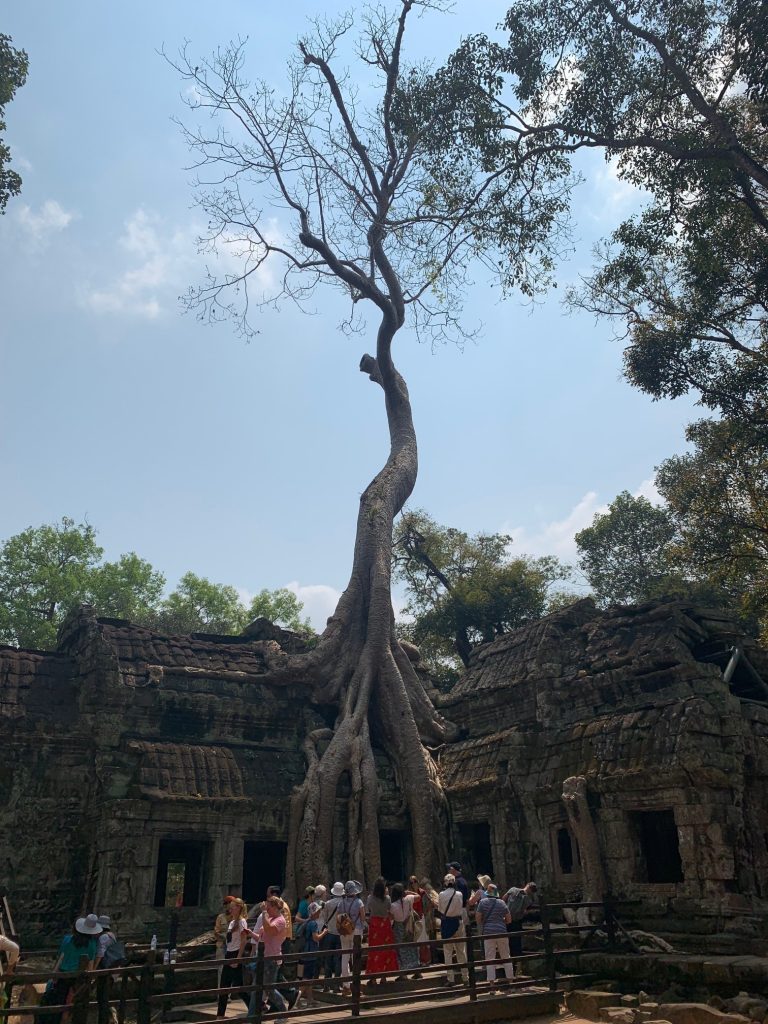
Angkor Wat.
The capital, Phnom Penh is located at the beginning of the Mekong River Delta. Along its banks are restaurants, bars and parks. The Royal Palace and its adjacent Silver Pagoda are also in the capital. The Silver Pagoda holds some if the most amazing treasures in the country including a collection of crystal and jewel encrusted Buddhas. The “Emerald Buddha”, made of green crystal and is rumored to be made from French Lalique or Baccarat crystal, though its actual provenance is a mystery. Other Buddha’s are encrusted with gems, such as the life-sized gold Maitreya Buddha which includes a 25 carat diamond!
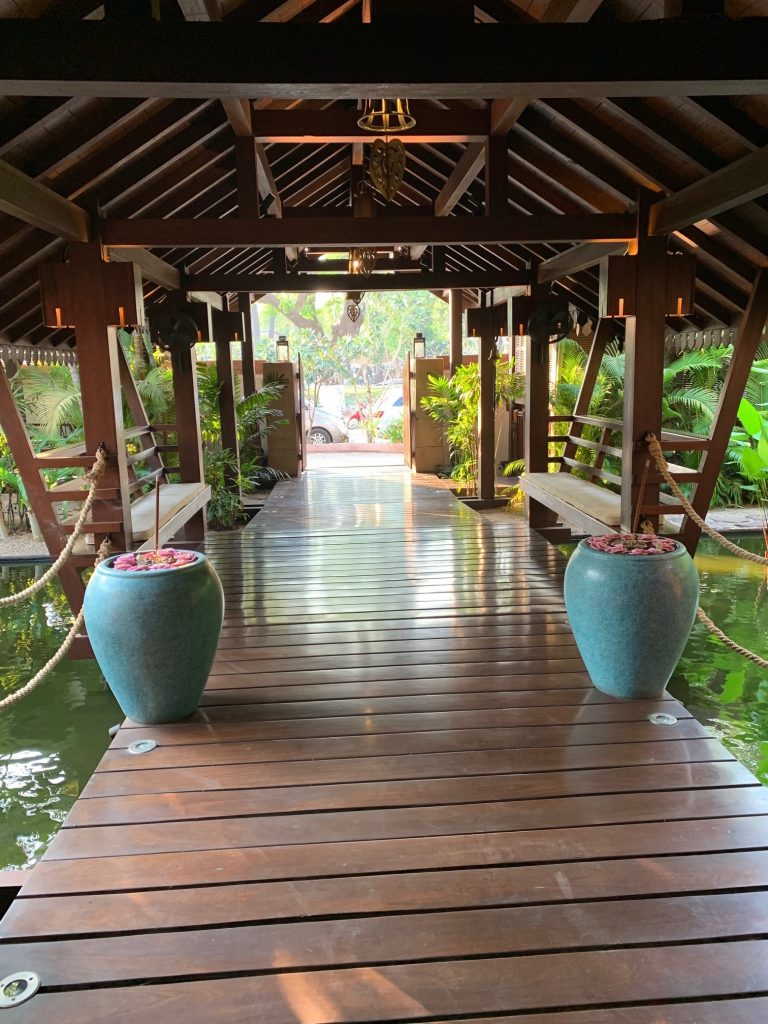
The Welcoming entrance at The Belmond La Residence Siem Reap.
Forest covers more than half of Cambodia and contains flood plains frothe Mekong. Wet rice is the mainstay of agriculture and is grown within the flood plains. Many Cambodians live in floating houses and make their livelihoods in and around the river.
 Angkor Wat.
Angkor Wat.
Tourism is relatively new in Cambodia and many people that visit want to experience the amazing temples and ruins, the most famous of which is Ankor Wat. Originally built as a Hindu temple dedicated to the god Vishnu in the beginning of the 12th century, it is known to be the most significant place of continuous worship since its inception.
Angkor Thom is another amazing site. It was the last capital built by the Khmer kingdom and is full of carved walls and giant towers, which mark each corner with the faces of gods, goddesses and fantastical creatures covering them. The original interior of these structures had canals running through them but have since been overtaken by jungle.
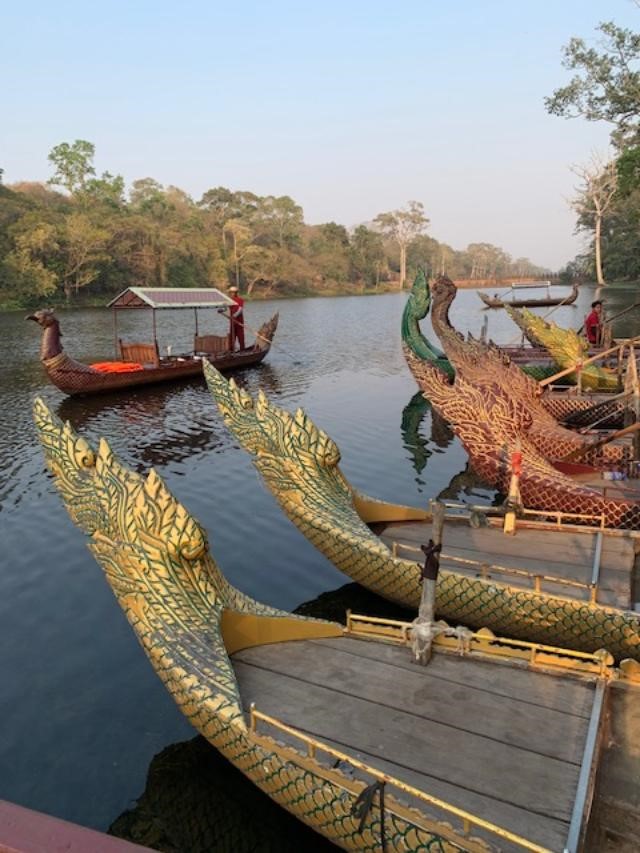
Beautiful transportation on the rivers.
One of the most photographed temples in the world is Ta Prohm, located about a half mile east of Angkor Thom. Throngs of visitors flock to see this famous site and it can be especially crowded. Most tourists visit this site in the morning because it is supposedly not as hot as the afternoon but it’s still quite hot in the morning so the afternoon is a better time to go see it if you don’t like lots of random people in your photos!!

Water buffalo work the rice paddies.
Everywhere you look in and around ruins and temples are Macaque monkeys who have become very accustomed to humans, water buffalo are everywhere as well. Visually stunning with a long and complicated history, The Kingdom of Cambodia exudes its past around every corner and in every temple. This historically rich and diverse country is a total sensory experience and impossible to fully describe with mere words.

Thank you Dara Shalette and Edward Wood-Prince for sharing their photos and experiences with Classic Chicago.



